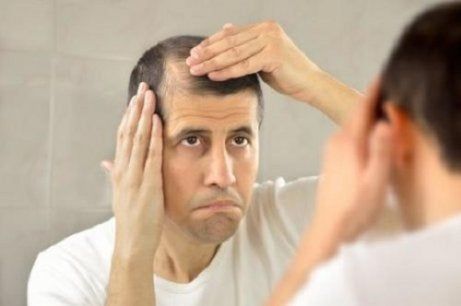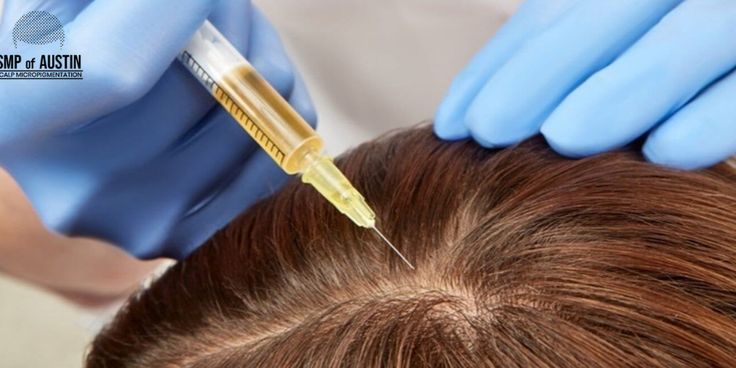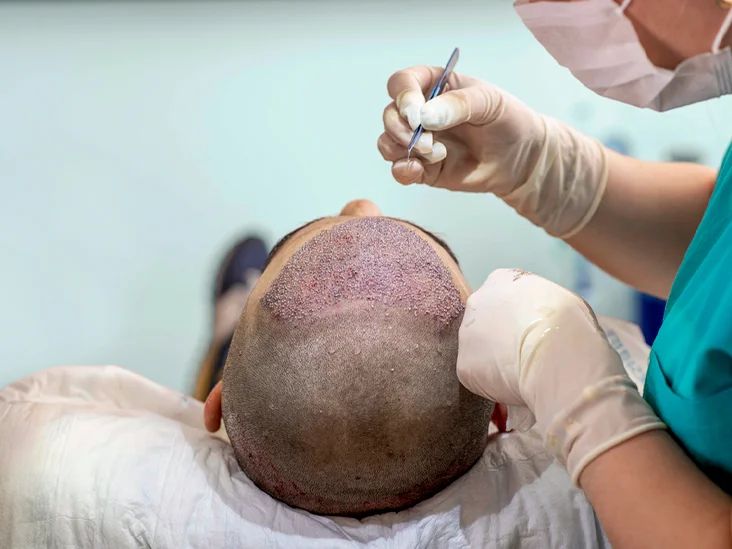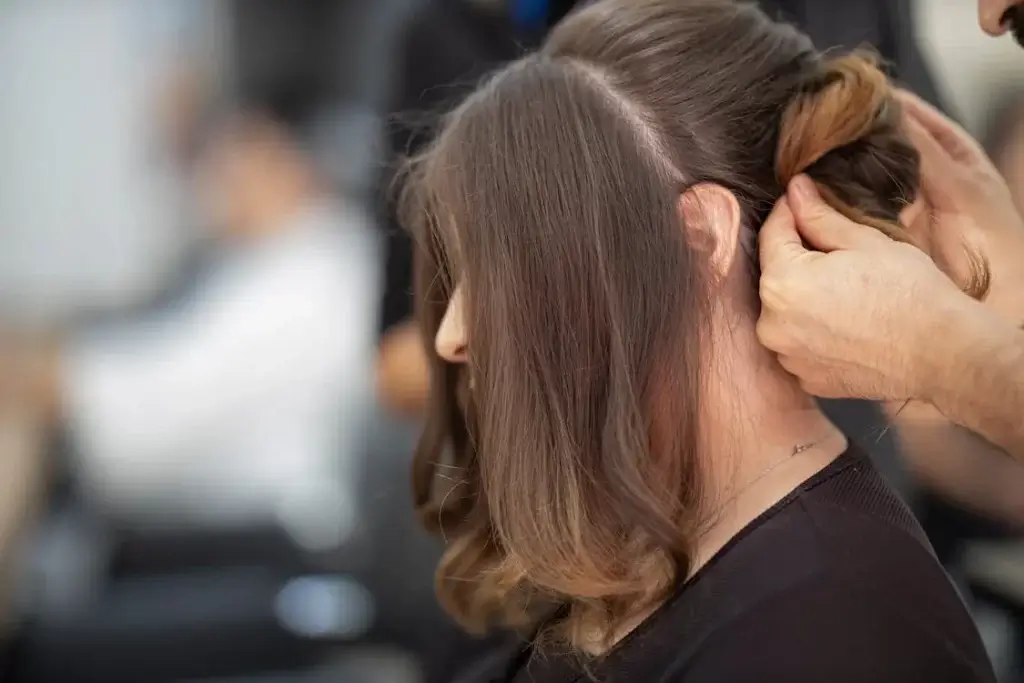Alopecia is a medical term for the loss hair, which can affect the scalp or other parts of the body. It can result in partial or complete hair loss and can be temporary or permanent, depending on the underlying cause.
Thank you for reading this post, don't forget to subscribe!Overview of Types of Alopecia
There are several types of alopecia treatment, each with distinct characteristics:
- Alopecia Areata: An autoimmune condition where the immune system attacks hair follicles, leading to round patches of hair loss.
- Androgenetic Alopecia: Also known as male or female pattern baldness, this is a hereditary form of hair loss that occurs with aging.
- Telogen Effluvium: A temporary form of hair loss that usually follows stress, illness, or hormonal changes.
- Traction Alopecia: Hair loss caused by prolonged tension on the hair, often due to certain hairstyles.
Importance of Understanding and Managing Alopecia
Understanding alopecia treatment is crucial for effective management and treatment. Early diagnosis and intervention can significantly improve outcomes, reducing the psychological impact and helping individuals maintain a better quality of life. Additionally, understanding the different types and causes of alopecia can guide appropriate treatment choices and preventative measures, promoting overall hair health.
Alopecia: How to Manage and Treat Hair Loss Effectively
Explore comprehensive strategies for managing alopecia and overcoming hair loss challenges effectively. This article delves into various types of alopecia, including alopecia areata and androgenetic alopecia, highlighting their causes and symptoms. Discover proven treatment options such as medications, hair transplants, and lifestyle adjustments to promote hair regrowth and maintain scalp health. Whether you’re seeking practical advice on coping mechanisms or exploring supportive communities, this resource aims to empower individuals with the knowledge and tools to navigate alopecia with confidence and resilience.
A. Understanding Alopecia

What Causes Alopecia?
Alopecia treatment can result from various factors, often interconnected. Understanding these causes is key to managing and treating the condition effectively.
Genetic Factors
- Hereditary Patterns: Many forms of alopecia treatment, particularly androgenetic alopecia, are strongly influenced by genetics. If close family members experience hair loss the likelihood of developing similar patterns increases.
- Inherited Traits: Specific genes can predispose individuals to hair follicle miniaturization, leading to gradual hair thinning and loss over time.
Autoimmune Responses
- Immune System Attack: In conditions like alopecia areata, the immune system mistakenly targets hair follicles, causing hair to fall out in patches.
- Inflammatory Responses: Autoimmune reactions can lead to inflammation around hair follicles, disrupting normal hair growth cycles and leading to hair loss.
Environmental Triggers
- Stress: Physical or emotional stress can trigger loss the hair, often seen in conditions like telogen effluvium, where hair prematurely enters the resting phase and sheds.
- Nutritional Deficiencies: Inadequate intake of essential nutrients, such as iron, vitamins, and proteins, can weaken hair structure and lead to Balding.
- Hairstyling Practices: Excessive pulling, tight hairstyles, and harsh chemical treatments can damage hair follicles, resulting in traction alopecia.
- External Factors: Environmental pollutants and exposure to toxins can also contribute to hair damage and loss.
B. Diagnosing Alopecia
Symptoms to Watch For
Recognizing the symptoms of alopecia early can aid in prompt diagnosis and treatment. Key symptoms include:
- Sudden loss of hair in clumps or patches
- Gradual thinning on the top of the head
- Receding hairline in men
- Widening part in women
- Circular or patchy bald spots on the scalp, beard, or eyebrows
- Full-body hair loss in severe cases
- Excessive shedding of hair after brushing or washing
Medical Tests and Procedures
To diagnose alopecia accurately, several medical tests and procedures can be conducted:
- Scalp Examination
- A thorough examination of the scalp helps in identifying the pattern and extent of hair loss.
- Doctors look for signs of inflammation, redness, scaling, or scarring which can indicate specific types of alopecia.
- Blood Tests
- Blood tests can detect underlying health conditions that might be causing hair loss.
- Common tests include:
- Complete blood count (CBC)
- Thyroid function tests
- Hormone levels (e.g., androgens, estrogen)
- Autoimmune markers
- Biopsy
- A scalp biopsy involves taking a small sample of scalp tissue for laboratory analysis.
- This procedure helps in determining the exact type of alopecia by examining hair follicles and skin under a microscope.
- Dermoscopy
- Dermoscopy is a non-invasive procedure that uses a dermoscope to magnify the scalp.
- It helps in evaluating hair and scalp conditions more closely, allowing the identification of subtle signs not visible to the naked eye.
- This method is particularly useful for distinguishing between different types of alopecia and other scalp disorders.
By combining these diagnostic tools, healthcare providers can accurately diagnose the type and cause of alopecia, leading to more effective treatment plans tailored to individual needs.
C. Treatment Options for Alopecia
Medical Treatments

- Topical Treatments
- Minoxidil: A topical solution applied to the scalp to stimulate hair growth and prevent further of loss the hair. It is effective for both men and women with certain types of alopecia.
- Oral Medications
- Finasteride: A prescription medication that works by inhibiting the hormone dihydrotestosterone (DHT), which is involved in hair loss in men with androgenetic alopecia.
- Corticosteroids
- Used in various forms (topical, injections, oral) to suppress the immune response in conditions like alopecia areata, reducing inflammation around affected hair follicles and promoting hair regrowth.
Surgical Treatments

- Hair Transplant Surgery
- Involves transplanting hair follicles from areas of dense hair growth (donor sites) to areas affected by hair loss (recipient sites). It is commonly used for androgenetic alopecia and certain cases of alopecia areata.
- Scalp Reduction
- A surgical procedure where the bald scalp is surgically removed and the remaining scalp with hair is stretched and repositioned to cover the balding area. It is typically used in extensive cases of hair loss.
Alternative Treatments
- Natural Remedies and Supplements
- Includes vitamins, minerals, and herbal supplements believed to promote hair growth and improve hair health. Examples include biotin, saw palmetto, and essential oils like rosemary oil.
- Laser Therapy
- Low-level laser therapy (LLLT) involves using red or near-infrared light to stimulate hair follicles, potentially promoting hair growth. It is used as a non-invasive treatment option for various types of alopecia.
- Platelet-Rich Plasma (PRP) Therapy
- Involves injecting a concentration of the patient’s own platelets into the scalp to stimulate hair growth. PRP therapy is thought to promote healing and hair regrowth by releasing growth factors into the scalp.
These treatment options for alopecia vary in effectiveness depending on the type and severity of hair loss and should be discussed with a healthcare professional to determine the most suitable approach for individual needs.
D. Lifestyle and Home Remedies

Healthy Diet and Nutrition
Maintaining a balanced diet rich in essential nutrients like vitamins A, C, D, and E, as well as minerals such as zinc and iron, can support healthy hair growth. Incorporate foods like leafy greens, fruits, lean proteins, and healthy fats into your diet. Consider consulting with a nutritionist for personalized dietary advice.
Stress Management Techniques
Chronic stress can contribute to hair loss. Practicing stress-relief techniques such as yoga, meditation, deep breathing exercises, or engaging in hobbies and activities you enjoy can help reduce stress levels and support overall well-being.
Proper Hair Care Practices
Gentle handling of your hair is essential to prevent further damage and promote hair health. Use a mild shampoo and conditioner suitable for your hair type. Avoid excessive brushing or combing, especially when hair is wet, as it can lead to breakage. Pat hair dry with a towel instead of rubbing vigorously.
Avoiding Hair Damage
Protect your hair from damage by avoiding harsh treatments such as chemical relaxers, frequent use of heated styling tools (like straighteners and curling irons), and tight hairstyles that pull on the hair follicles. Opt for loose hairstyles and use heat protectant products when styling with heat. Regular trims can also help prevent split ends and maintain healthy hair.
E. Coping with Alopecia
Psychological Impact of Hair Loss
Hair loss due to alopecia can have profound psychological effects on individuals, impacting their self-esteem, body image, and overall quality of life. It may lead to feelings of sadness, anxiety, and even depression. Understanding and addressing these emotional aspects are essential parts of coping with alopecia.
Support Groups and Counseling
Joining support groups or seeking counseling can provide valuable emotional support and practical advice for coping with alopecia. These platforms offer a safe space to share experiences, learn coping strategies, and connect with others facing similar challenges.
Tips for Boosting Self-Esteem
Maintaining a positive self-image despite hair loss can be challenging but achievable. Here are some tips:
- Focus on Inner Qualities: Emphasize personal strengths and qualities beyond physical appearance.
- Healthy Lifestyle: Adopting a healthy diet, regular exercise, and adequate sleep can boost overall well-being.
- Self-Care: Engage in activities that bring joy and relaxation, such as hobbies, meditation, or spending time with loved ones.
Choosing Wigs, Hairpieces, and Other Cosmetic Options
For those seeking to restore their appearance, wigs, hairpieces, and cosmetic options provide practical solutions. Consider the following:
- Consultation: Visit a wig specialist or dermatologist to explore suitable options.
- Style and Comfort: Choose styles that match your natural hair or express your personal style.
- Maintenance: Learn how to care for and maintain wigs or hairpieces to ensure durability and comfort.
These strategies can help individuals with alopecia regain confidence and continue to lead fulfilling lives despite hair loss.
F. Preventing Further Hair Loss
Preventative Measures and Tips
To prevent further hair loss and promote hair health, consider the following tips:
- Maintain a Healthy Diet: Ensure your diet includes adequate nutrients like vitamins A, C, D, E, and minerals such as iron and zinc, which are essential for hair growth.
- Avoid Harsh Treatments: Minimize the use of heat styling tools, chemical treatments, and tight hairstyles that can cause hair breakage and damage.
- Practice Gentle Hair Care: Use a mild shampoo and conditioner suitable for your hair type. Avoid excessive brushing or combing when hair is wet, as it is more prone to breakage.
- Manage Stress: Stress can contribute to hair loss. Practice relaxation techniques such as meditation, yoga, or deep breathing exercises to reduce stress levels.
- Protect Your Hair: Wear a hat or use sunscreen on your scalp when exposed to sunlight to protect your hair follicles from damage.
Regular Medical Check-Ups
Regular medical check-ups with a healthcare provider or dermatologist are essential for monitoring your hair loss condition. These check-ups can help in:
- Tracking Progress: Monitoring the effectiveness of current treatments and making adjustments as needed.
- Identifying New Issues: Addressing any new symptoms or changes in your hair loss pattern promptly.
Monitoring and Adjusting Treatments
Effective management of hair loss often involves trying different treatments and adjusting them based on individual response. Here are some strategies for monitoring and adjusting treatments:
- Follow Treatment Plans: Adhere to prescribed medications, topical treatments, or lifestyle changes recommended by your healthcare provider.
- Track Progress: Keep a journal or use photos to document changes in your hair growth or loss over time.
- Consult Your Healthcare Provider: Discuss any concerns or changes in your condition with your healthcare provider to determine if adjustments to your treatment plan are necessary.
By following these preventative measures, scheduling regular medical check-ups, and monitoring and adjusting treatments as needed, you can help prevent further hair loss and promote overall hair health effectively.
G. Success Stories and Case Studies
Real-Life Experiences of People with Alopecia
Many individuals have faced the challenges of alopecia with courage and resilience. Here are some real-life experiences:
- Sarah’s Journey: Sarah, diagnosed with alopecia areata at age 25, initially struggled with self-esteem issues but found strength through support groups and counseling. She now confidently embraces her baldness and shares her story to inspire others.
- James’s Battle: James, dealing with androgenetic alopecia from a young age, explored various treatment options until finding success with a combination of minoxidil and hair transplant surgery. His journey emphasizes perseverance and the importance of personalized treatment plans.
Effective Treatment Journeys
Effective treatments have transformed the lives of many individuals living with alopecia:
- Emma’s Experience: Emma’s journey with telogen effluvium following a stressful period in her life was alleviated through lifestyle changes, including stress management techniques and dietary adjustments. Her hair growth gradually returned, highlighting the impact of holistic approaches in managing temporary alopecia.
- David’s Triumph: David, suffering from severe alopecia universalis, underwent experimental PRP therapy sessions and saw significant regrowth over time. His story illustrates the potential of innovative treatments in treating challenging cases of alopecia.
Inspirational Recovery Stories
Recovery from alopecia is often marked by personal growth and newfound confidence:
- Linda’s Transformation: Linda, diagnosed with traction alopecia due to years of tight hairstyles, opted for wigs while focusing on hair care practices that promote regrowth. Her journey emphasizes the importance of patience and self-care in managing and recovering from hair loss.
- Michael’s Empowerment: Michael, diagnosed with alopecia totalis at a young age, found empowerment through advocacy and education about his condition. His proactive approach to raising awareness has inspired others facing similar challenges.
These stories highlight the diversity of experiences and paths to recovery from alopecia, offering hope and encouragement to those navigating their own journeys with hair loss.
Recap of Key Points
In conclusion, alopecia encompasses various forms of hair loss, from autoimmune conditions like alopecia areata to hereditary patterns such as androgenetic alopecia. Understanding the underlying causes and types of alopecia is essential for effective management and treatment.
Encouragement to Seek Professional Help
For individuals experiencing hair loss, seeking professional help from dermatologists or specialists in trichology is crucial. These professionals can provide accurate diagnosis, personalized treatment plans, and ongoing support to manage alopecia effectively.
Final Thoughts on Managing and Treating Alopecia
Managing alopecia involves a multifaceted approach, including medical treatments like topical medications and hair transplant surgery, as well as lifestyle changes such as stress management and proper hair care. While alopecia can pose emotional challenges, advancements in treatment options offer hope and support for maintaining hair health and overall well-being.
By staying informed, proactive, and seeking professional guidance, individuals can navigate the complexities of alopecia with confidence and improve their quality of life.
Additional Resources
Recommended Books and Articles
- “The Hair Loss Cure: A Self-Help Guide” by David Kingsley
- “Hair Loss: Causes, Treatments, Practical Advice” by Robert T. Brodell and Thomas P. Habif
- “Alopecia Areata: Understanding and Coping with Hair Loss” – Mayo Clinic
Support Organizations and Online Communities
- National Alopecia Areata Foundation (NAAF) – Provides support, advocacy, and resources for individuals with alopecia areata. Website: www.naaf.org
- Alopecia UK – UK-based charity offering support and information for people with all types of alopecia. Website: www.alopecia.org.uk
- Alopecia World – Online community for individuals affected by alopecia, offering forums, blogs, and support groups. Website: www.alopeciaworld.com
Contact Information for Professional Help
- Dermatologists specializing in hair disorders: Consult a dermatologist for personalized diagnosis and treatment options.
- Endocrinologists: For cases related to hormonal imbalances affecting hair health.
- Trichologists: Experts in scalp and hair health, specializing in hair loss treatment.
These resources can provide further information, support, and guidance for individuals experiencing alopecia and seeking assistance in managing their condition effectively.





